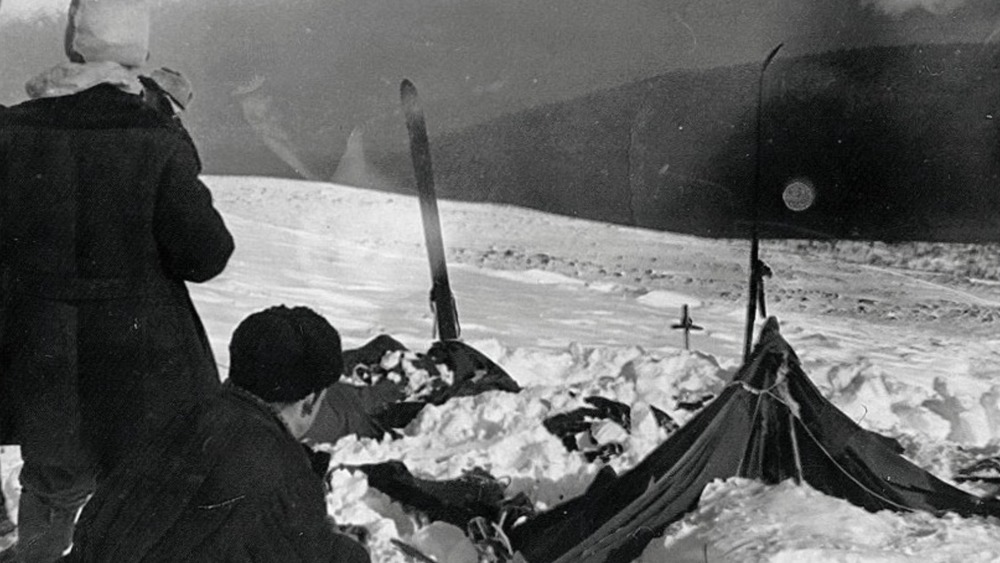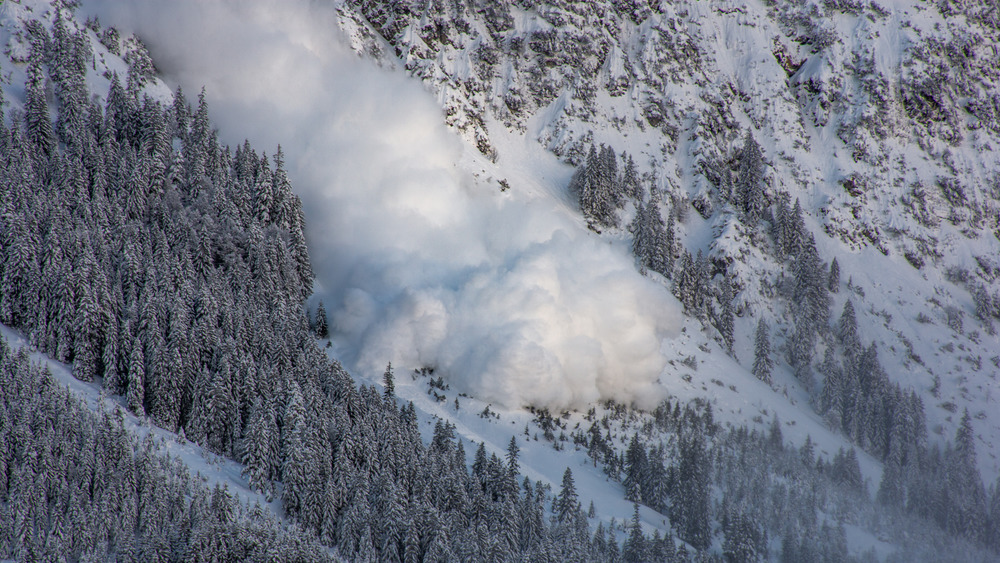There's A New Twist In The Dyatlov Pass Hiking Incident
Less than two weeks after a Swiss research team presented compelling evidence that the mystery of the 1959 Dytlov Pass hiking incident had finally been solved, it appears that history may have eerily repeated itself. Newsweek reported on February 10, 2021, that a group of eight tourists from Moscow had gone missing in the same mountain pass where nine people died in a bizarre fashion that went unexplained for over 60 years. A source told the Russian media that the group had gone on the hike as a tribute to the men and women who had lost their lives there in 1959. This year's group had been expected to return on Wednesday morning, but they had not yet been heard from. "They were supposed to leave at eight o'clock this morning," said the source. "But they have not returned and there is no contact with them."
Although other groups hiking in the area at the same time had registered with the region's Ministry of Emergency Situations, the group said to be missing did not do so. "If the group is not registered, then there have been no reports of missing people, either," a spokesperson from the ministry said. It seems the Dyatlov Pass remains stubbornly shrouded in mystery.
The 1959 Dyatlov Pass mystery had just been solved
The bodies of those who died in Dyatlov Pass in 1959 were in such a strange state when they were found that their deaths defied explanation for decades. All of the bodies were undressed to a certain degree. Some of the skulls and chests of the dead had been cracked open or crushed. Two had their eyes gouged out, and one was missing her tongue. Over the years, several spectacular theories had been advanced to explain what had happened to them. Secret experiments by the Soviet military was a big hit, as were UFOs and a Yeti attack.
But Smithsonian relates a National Geographic report in January 2021 that a rare kind of "bizarrely small, delayed" avalanche was very likely the cause of the strange deaths. It's not as fun an explanation as aliens or the abominable snowman, but it's what the science says most likely happened. Sometimes truth isn't actually stranger than fiction.

